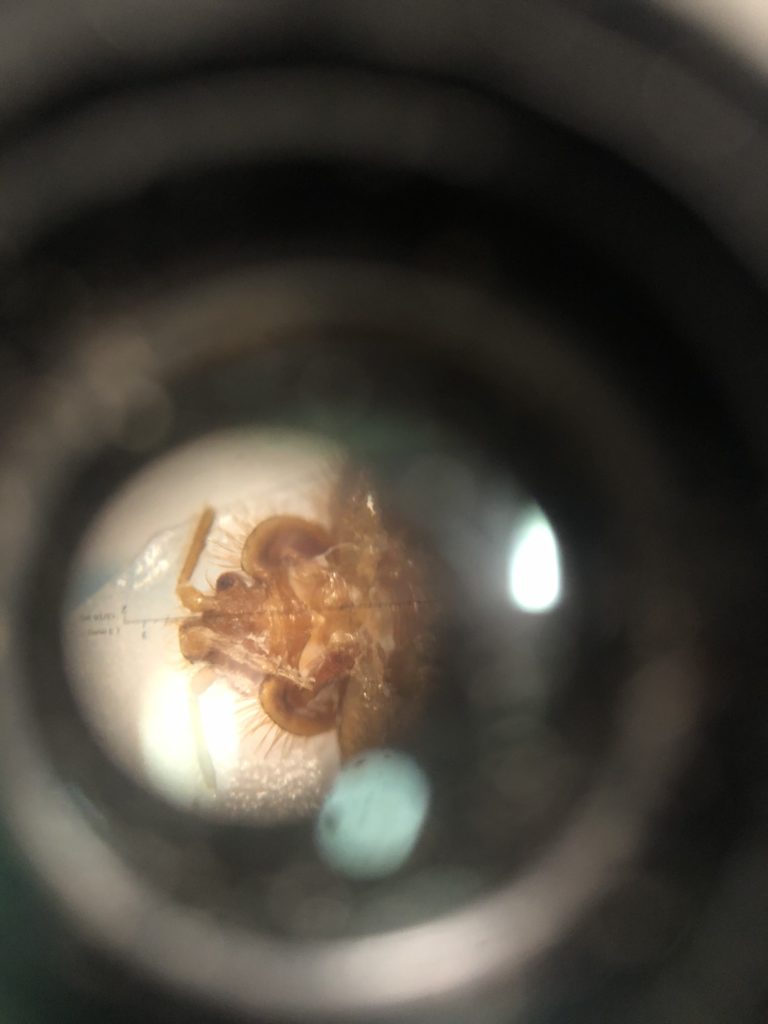When I came in from my run, my wife asked me what the red bumps were on my body. My response was what most people would have in this situation. “What red bumps?” I reactively looked down and saw a string of red bumps along my chest and abdomen. These little welts were unknown to me prior to this moment, so now the investigation begins. She then followed up with the big question, “are those bed bug bites?!” It is hard to say. You can’t precisely identify bed bug bites by looking at the welts. But, here are the top 5 signs they are bed bug bites.

Top 5 bed bug bite signs
- Recent travel – bed bugs are master hitchhikers but they can’t fly. They are very small but visible. If there are new bites appearing on a person’s body the first thing to think through is where have I been? In this instance I had recently traveled to a large metro and stayed in a run down apartment complex that was renting out vacant units for single nights (yeah, this is full of red flags) with plenty of cockroaches to keep me company.
- The count and arrangement – while the specific bite will not tell you everything you need to know from a visual inspection, it does supply several clues. Bed bugs tend to hang out in large populations. Obviously, there could be a single bug (they have to start somewhere), but most situations lead to multiple bites. Additionally, bed bugs are opportunistic feeders. They will wander up to their host and line up (more or less) for a feeding. Since I was laying on my back on the right side of the bed, it made sense that the bed bugs could efficiently travel up from the bed frame and feed along my right side leaving a fairly straight line of bites.
- Ruling out other culprits – it is easy to jump to conclusions. This is especially true with the interjection of emotion that comes with the realization that I had potentially fed a parasite. Despite the emotional rush, it is important to work through the list of possibilities such as:
- other pests (mosquitoes, ticks, fleas, lice, etc.)
- -changes in soaps and detergents
- -changes in medications
- -viruses and bacteria (we call them bugs as well, but the treatment is quite different)
- Consider the neighbors – There are various neighbors that can move in and bring bed bugs with them. This could be someone that shares an adjoining wall such as an apartment above or below or the neighbor in a duplex. Additionally, it could be non-human neighbors such as bats (bat bugs), birds (swallow bugs), poultry (chicken bugs), etc. NOTE: bat bugs are not the same as bed bugs though they are closely related. They do require a different treatment process.
- Review the list of imports – This is a bit tricky because it could extend farther back in time than just a few days. Since bed bugs can go a year without feeding, it could even be a piece of furniture that was picked up at a yard sale or the “free” stash on the side of the road. In addition to mattresses, book cases, and couches, pay attention to books or other items with hiding spaces such as electronics or bindings that could house a bed bug hitchhiker.

Analyzing the signs for bed bugs
None of these pieces by itself can emphatically rule for or against bed bugs. The more arrows point in one direction or another, the better idea you have. It is best thing to do is to get a professional out to do an inspection. Professional inspections provide some closure and peace of mind to the situation. Bed bugs can be elusive and tricky. The bed bug experts at Rove Pest Control have the answers you need to get the peaceful sleep you need.
About Rob Greer: Pest Control Expert and Industry Leader
Rob Greer, co-founder of Rove Pest Control, has a deep connection with nature, developed during his upbringing in rural Idaho where he raised horses and cattle. He began his career in pest control in 2001 to support his university studies. After earning a BS in Business Management, Rob, along with Lenny Gray and McKay Bodily, founded Rove Pest Control.
Rob has played a pivotal role in shaping the operational framework of Rove Pest Control, with a focus on personal development for team members, public health awareness, and tailoring services to meet the needs of individuals and communities.
As an Associate Certified Entomologist (ACE) and Subject Matter Expert (SME), Rob has made significant contributions to the pest control industry. He has collaborated on the Minnesota Department of Agriculture’s UMN Extension certification manual and exam development, the National Pesticide Applicator Certification Core Manual for the EPA, and the Quality Pro Customer Service Credential Task Force. His expertise has also been recognized in his testimony for the pest control industry before the Minnesota state legislature as a State Policy Affairs Representative. Currently, Rob serves as the President of the Minnesota Pest Management Association Board. Learn more about about Rob Greer.